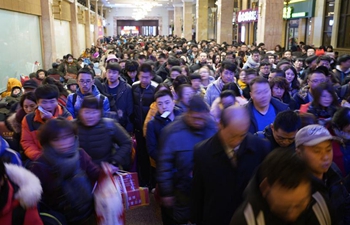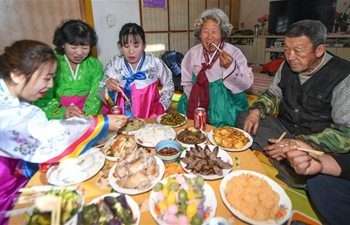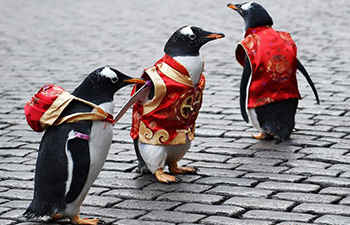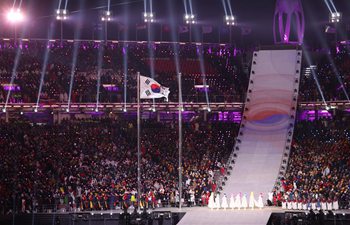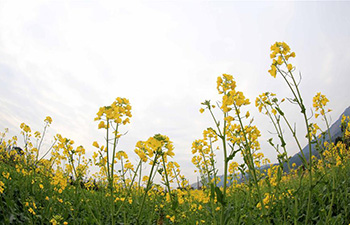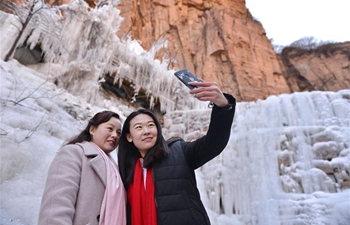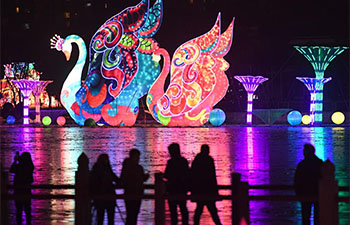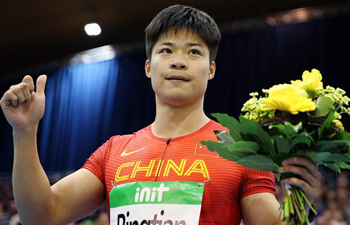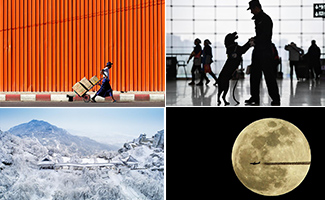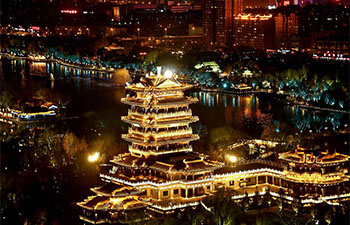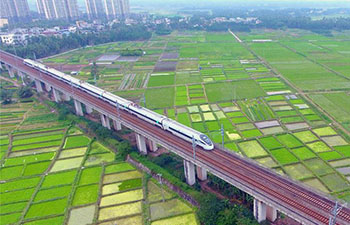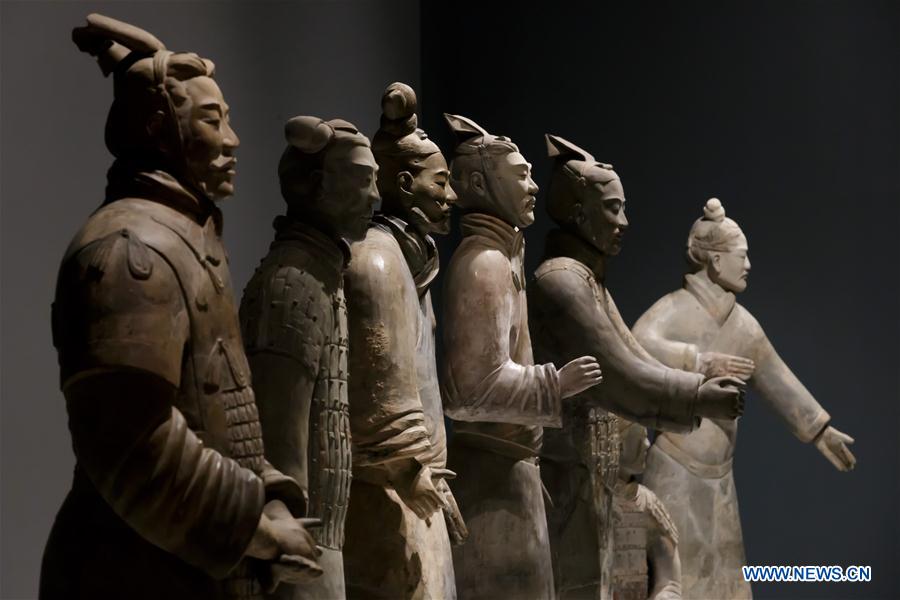
Terracotta Warriors are seen during a reception and private viewing ahead of the exhibition "China's First Emperor and the Terracotta Warriors" at the World Museum in Liverpool, Britain, on Feb. 8, 2018. The stunning exhibition featuring the famous Terracotta Warriors opened to public in Liverpool on Friday. (Xinhua/Tim Ireland)
LONDON, Feb. 9 (Xinhua) -- China's Terracotta Army marched to Britain as Liverpool's long-awaited Terracotta Warriors exhibition opened on Friday. Objects from one of the world's greatest archaeological discoveries attracted hundreds of visitors on the first day.
The exhibition in Liverpool's World Museum displays items spanning almost 1,000 years of Chinese history, from the conflicts and chaos of the Warring States era, to the achievements and legacy of the Qin and Han dynasties.
During a ceremony held at the museum Thursday before the exhibit opened, Mark Blundell, the Queen's lord-lieutenant of Merseyside, expressed sincere thanks on behalf of the British government to China's Shaanxi Province for allowing so many of China's cultural treasures to come to Britain.
Blundell read a message from Prime Minister Theresa May, who said "This exhibition is one of the most significant archaeological finds in history, and is a wonderful symbol of enduring friendship between our countries and our peoples."
Chinese Ambassador to Britain Liu Xiaoming said the exhibition offers an opportunity for Liverpool to strengthen its special connection with China.
"With this connection, Liverpool will play a unique role in advancing cultural and people-to-people exchanges between China and the UK, which is key to understanding and friendship between the people of our two countries," he said.
Liu also said that the site where the Terracotta Warriors were unearthed, Xi'an, or Chang'an in ancient China, was the eastern start of the ancient Silk Road and testifies to the vitality of the ancient trade route.
"China at the eastern end of the Belt and Road, and the UK at the western end should seize the new opportunities created by this Initiative. Together, we could harvest more 'golden fruits' for the China-UK 'Golden Era,'" he said.
The Belt and Road Initiative, proposed by China in 2013, aims to seek common development and prosperity.
David Fleming, director of the National Museums Liverpool, said: "The Terracotta Warriors exhibition is surely one of the most important exhibitions we have ever held here. We cannot wait to share this spectacular show with the city's people and welcome visitors from across the UK to witness this unmissable opportunity to see some of the Terracotta Army up close."
Artifacts dating back 1,000 years ago in the exhibit tell the story of the formation years of the Chinese nation, from the pre-unification era to the rise and reign of a unified China's First Emperor, Qin Shi Huang in 221 BC, followed by his legacy in the succeeding Han Dynasty (206 BC to 220 AD).
Among the artifacts that have travelled some 8,000 km to arrive in Liverpool are 10 life-size figures including a terracotta cavalry horse. They are on display as part of a collection of more than 180 spectacular artifacts from Emperor Qin Shi Huang's vast burial complex, which covers an area of 56 sq km in Shaanxi Province in northwestern China.
Visitors can also come face-to-face with warriors from the site and a vast range of other exquisite objects from the Qin and Han dynasties, some of them new to British visitors.
According to the World Museum, throughout the exhibition there are related student activities and public events on the sidelines. The show also coincides with Liverpool's China Dream season -- eight months of exhibitions, performances and events that aim to shed light on modern China and relations between Britain and China.
The season includes celebrations of the Chinese Lunar New Year or Spring Festival that falls on Feb. 16 this year, with thousands of Chinese lanterns lining the streets, a traditional Chinese lion dance and selected performances on Feb. 16-18.




